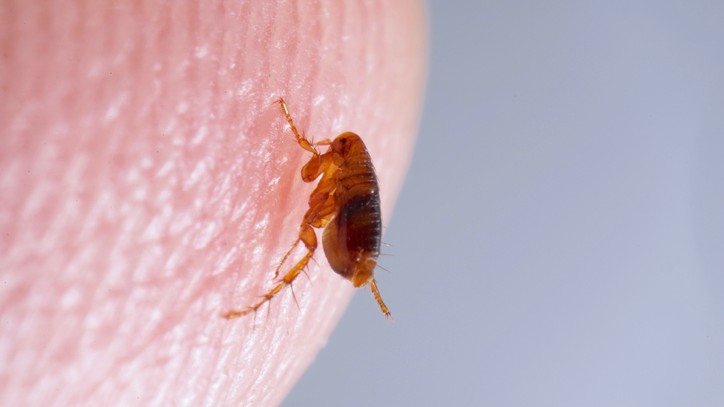Do fleas bite humans? Find out more about the pesky parasites that plague your pets
They’re a common nuisance for your pets, but do fleas bite humans and how can you tell if you’ve been bitten?

We often associate these pesky insects with our beloved animals, but do fleas bite humans? There are over 2,000 species of fleas around the world, 300 of which are found in the United States. These small flightless parasites have a taste for mammal blood, and humans are no exception.
Bites on humans typically occur when one daring flea makes the leap from an infested animal onto your skin but they rarely jump from person-to-person. Their time on your skin, however, is only temporary. Studies have shown that fleas would have to remain on a human for 12 hours to lay eggs and it would be pretty hard to miss one feeding on you for that long. Also, we generally have a lack of habitable body hair for them to survive, unlike the thick coats of a cat or dog.
Where do fleas usually bite humans?
Bites occur mostly around the ankles, feet and legs. However, because we love to pet our animals, bites can occur across the forearm also.
The location of these bites can help to identify them. For example, bed bug bites can look similar to a flea bite but are usually found on the abdomen or arms. Also, mosquito bites can appear anywhere on the body, but do not usually cluster together like flea bites do.
What do fleas bites on humans look like?
Although fleas are tiny insects, up to around 0.13 inches, their bites can leave a substantial mark on your skin. Once bitten, small, itchy, red lumps, below half an inch wide, will erupt on the skin and in some cases can develop into blisters.
Typically, flea bites will appear below the knee in a row of three, which is known as 'breakfast, lunch and dinner'. In rare cases, people who are allergic to flea bites can experience hives, swelling of the tongue or even difficulty breathing.
How to prevent flea bites
Thankfully, there are a number of ways you can protect yourself and your pet against flea bites.
The best topical flea treatments can be used to kill pesky fleas, by depositing chemicals, typically on the skin at the base of the neck, which paralyzes the fleas and prevents them from feeding on your pet and ultimately kills them.
Other chemical treatments, such as the best flea medication for dogs attack any fleas eggs that have been laid, killing them before they have had a chance to hatch.
Buying the best flea collars for cats is another common method of flea prevention. These wearable treatments emit a gas that can deter fleas from biting but can also contain medication that turns your pet's skin toxic to fleas. Of course, flea collars for dogs are also available and will usually offer protection for up to 8 months.
PetsRadar Newsletter
Get the best advice, tips and top tech for your beloved Pets
